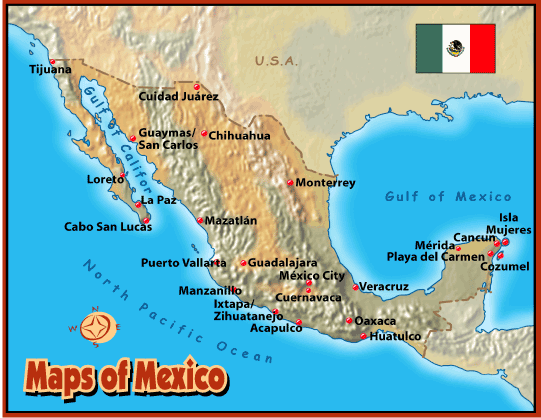

Mexican isn't Taco Bell and hot chili peppers! It is Mexico, a country of Latin America, just south of the United States.
The Rio Grande forms about 2/3 of the boundary between Mexico and the United States.
Only the United States and Brazil have more people than Mexico.
Mexico City is the capital and the largest city of Mexico. In fact, it is also the largest city in the world!
 |
Few countries have so wide a variety of landscapes and climates with short distances of one another. Towering mountains and high, rolling plateaus cover more than 2/3 of Mexico.
Mexico has tropical forests, dry deserts, and fertile valleys.
![]()
Manufacturing, agriculture, mining, and tourism are an important part of Mexico's economy.
Leading manufactured products include cars, cement, chemicals, clothing, processed foods, and steel. Crops are grown on only about 1/8 of Mexico's land. The rest is too dry, mountainous, or unsuitable for crops.
Mexico is one of the world's leading producers of coffee, corn, cotton, oranges, and sugar cane.

Mexico is rich in minerals. It is the world's leading silver producers. The country also has large deposits of copper, gold, lead, salt, and sulfur. Petroleum production has long been important in Mexico.
Mexico is a republic with a president, a national legislature called Congress, and a Supreme Court. There isn't any vice president. If the president doesn't finish his term of office, the Congress chooses a temporary president to serve out his term. Then special or regular elections are held.